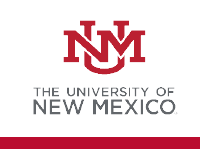
Art & Art History ETDs
Publication Date
4-23-1976
Abstract
The purpose of this thesis is to provide an outline for a personal construct on the nature and function of painting. This paper is the beginning of a work which will be continually revised in the years ahead. The revisions will be based on the development of my creative work. Two approaches to the form of this paper were available to me. The first method would have been a purely formal and descriptive analysis of the work. This method of writing would have made the surface of the painting more accessible to the reader but it would have done little to elucidate the deeper significance of the work. The second method was to offer an apology on the philosophical and psychological basis of my ideas. These thought processes have provided the motivating energy behind my work. I have chosen the latter method because it best affords the opportunity for personal creative thinking and writing. The major points of the thesis are a careful synthesis of current theories in general aesthetics, psychology, philosophy and cultural history. This synthesis has, I hope, helped to produce a unique and individual theory on the function and nature of art in general and painting in particular. I am indebted to the following authors and their works: Rudolf Arnheim, Visual Thinking; Jack Burnham, The Structure of Art; Edward Edinger, Ego and Archetype; Susanne Langer, Feeling and Form; George Mosse, The Culture of Western Europe; Leonid Ouspensky, The Meaning of Icons; C.G. Jung, The Archetypes and the Collective Unconscious and Symbols of Transformation; Herbert Read, Icon and Idea; and Harold Rosenberg, Art Works and Packages. The first portion of this paper is meant as a brief introduction into the causes of the present formless state of culture. The obviousness of this statement would seem to preclude its mention, but, I feel it is necessary to establish its validity because it forms the basic rationale of the paper. If the forms of our present culture have collapsed then it is necessary for man to create new ones, because form is needed for the continued expansion of human consciousness. I have adopted the theory that form is necessary for human consciousness from Rudolf Arnheim's notion that perception is thinking. I have also adopted Herbert Read's hypothesis that all abstract ideas in the mind are preceded by an image, or icon. My use of the word icon is derived from its two meanings. An icon may be a traditional religious picture or a visual image. This portion of the paper deals with the problem of formalism in art. My conclusion is that formalism alone cannot explain the nature of art. Any theory of art must take into account the irrational in man. Therefore, the underlying theory for the final portion of the paper comes from C.G. Jung's, The Archetypes and the Collective Unconscious, The Symbols of Transformation and Harold Rosenberg's definition of transformal art. I have freely interpreted both theories and have arrived at the phrase transformal icon. I feel that this phrase recognizes the formal, religious and metaphysical nature of art. Such an art goes beyond the strict adherence to external form leading to a change in the nature and function of painting. The function of painting is then metaphysical, revealing the mystery of being. The revelation of this mystery of being is both a personal and a transpersonal experience. In order to demonstrate this experience I have narrated the development of my creative work and I have drawn upon: an analogy (the iconostasis); a metaphore (two paintings); and a model of the transformal dynamic. The goal of this transformal dynamic is personal cultural unity and religious stability. My final conclusion is that art does not evolve to higher forms, it transforms itself dynamically from the center of the individuated self.
Language
English
Document Type
Thesis
Degree Name
Arts
Level of Degree
Masters
Department Name
UNM Department of Art and Art History
First Committee Member (Chair)
Harry Nadler
Second Committee Member
Nick Abdalla
Third Committee Member
Howard David Rodee
Fourth Committee Member
Illegible
Recommended Citation
Werenko, John D.. "Toward a Transformal Icon." (1976). https://digitalrepository.unm.edu/arth_etds/209


